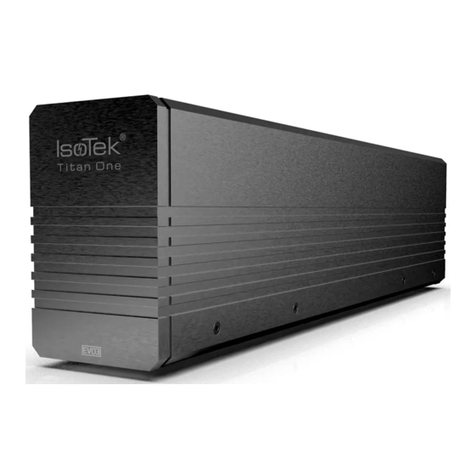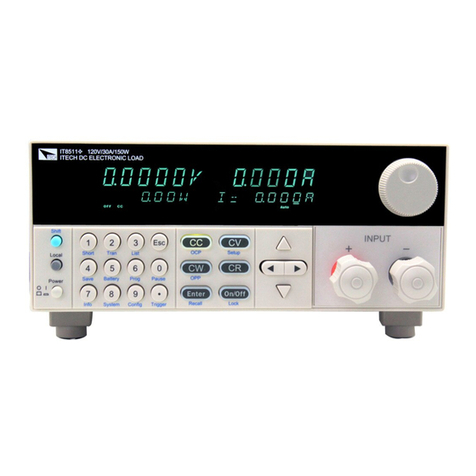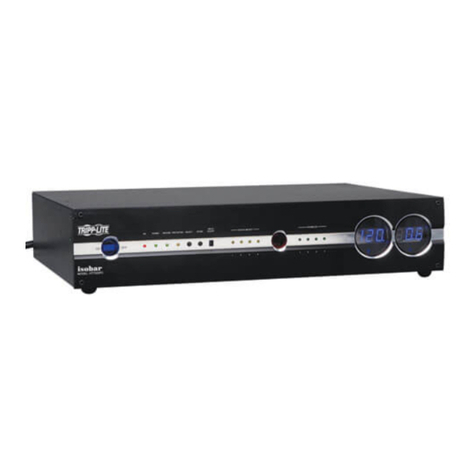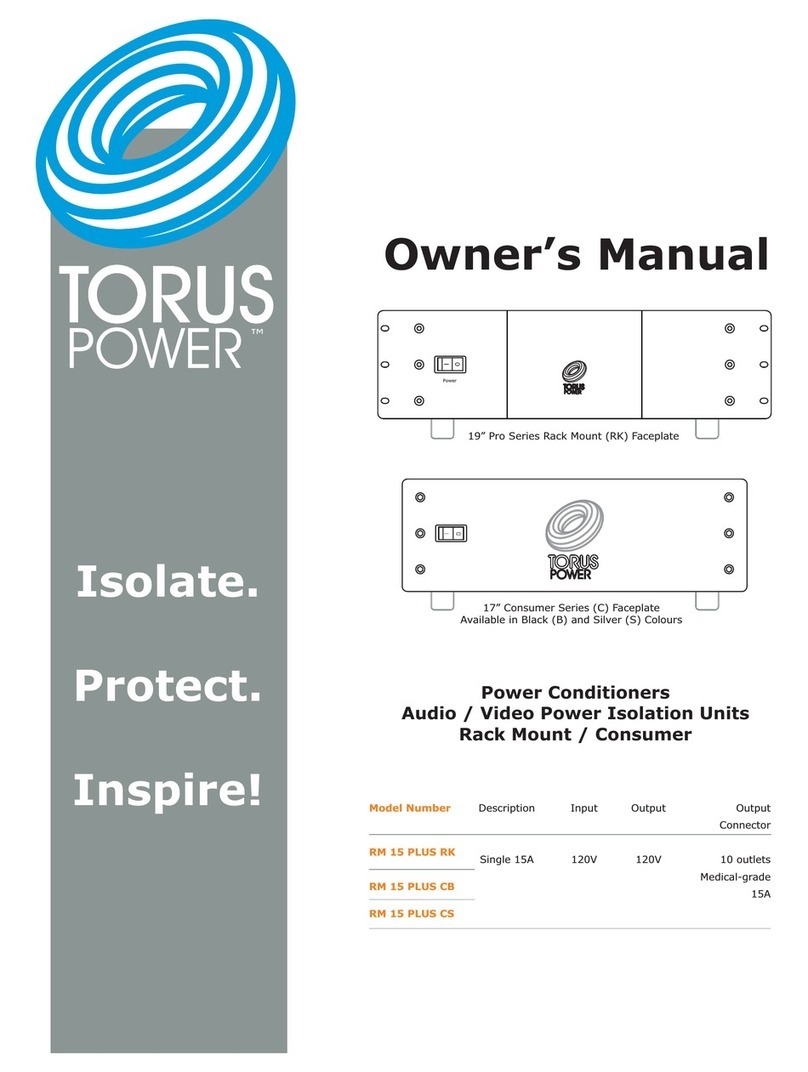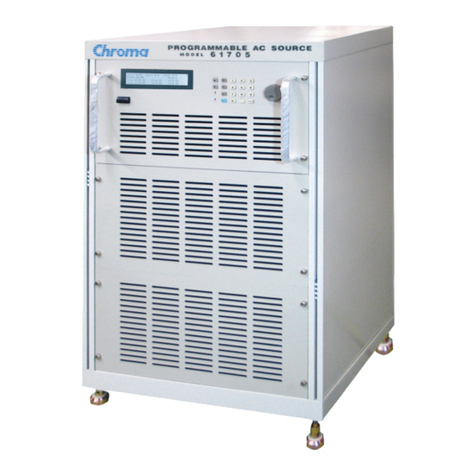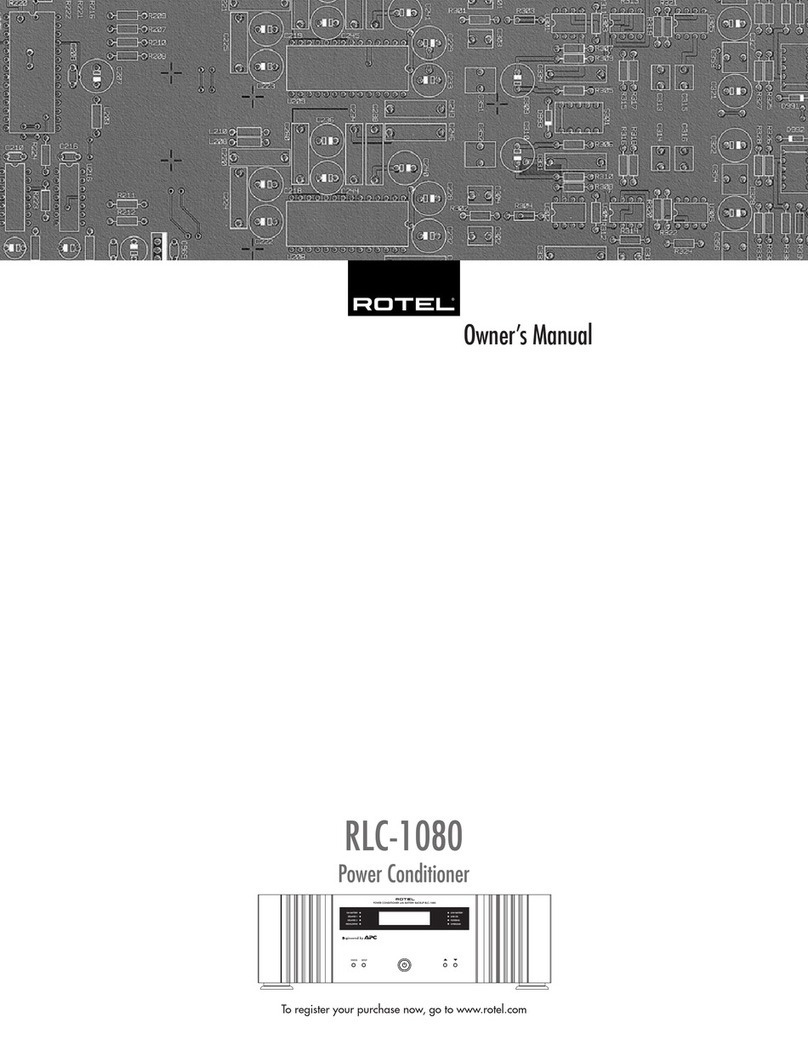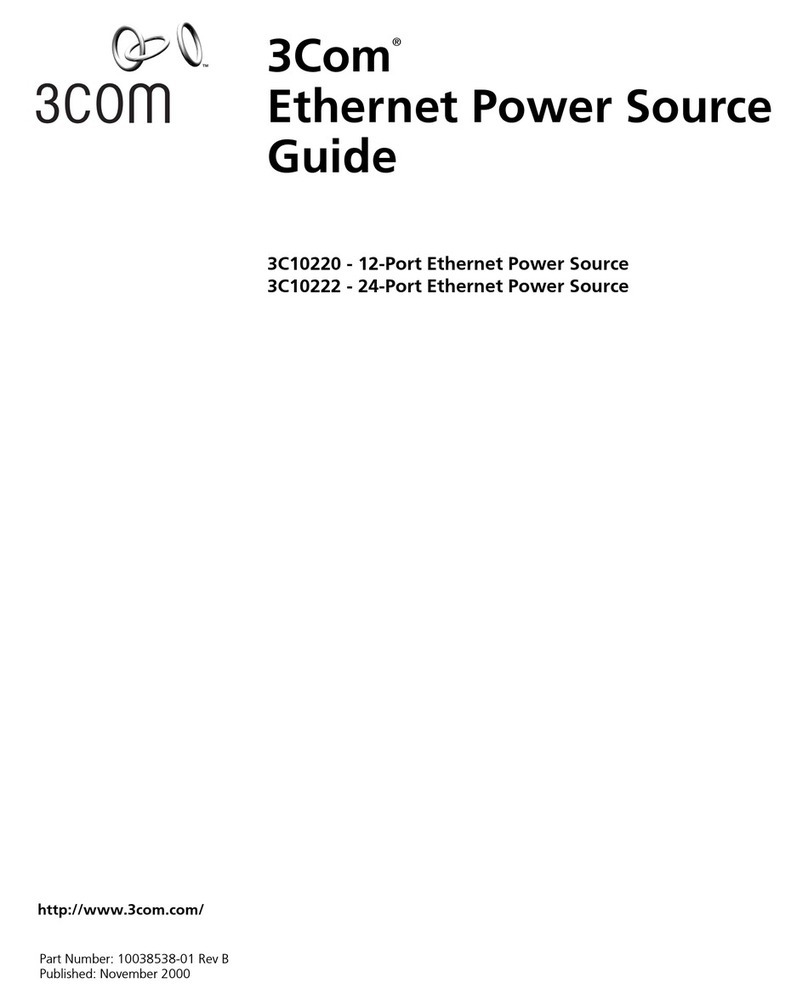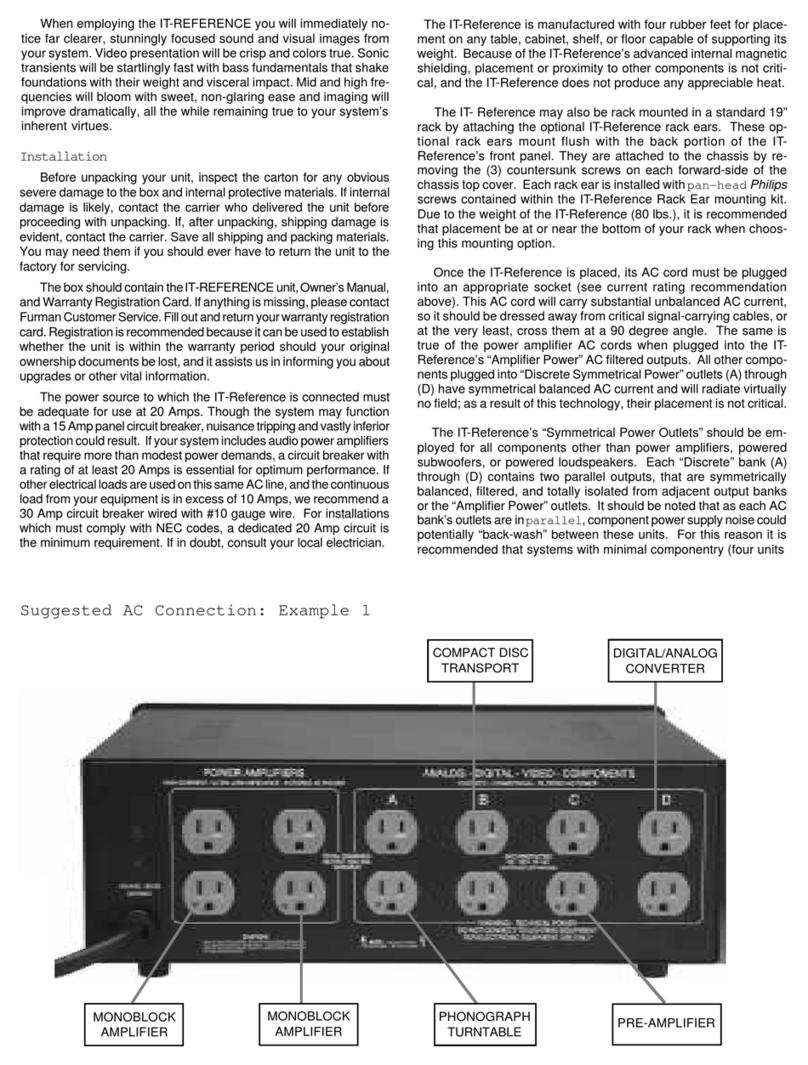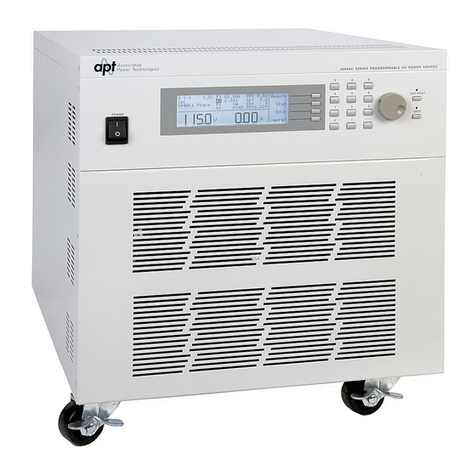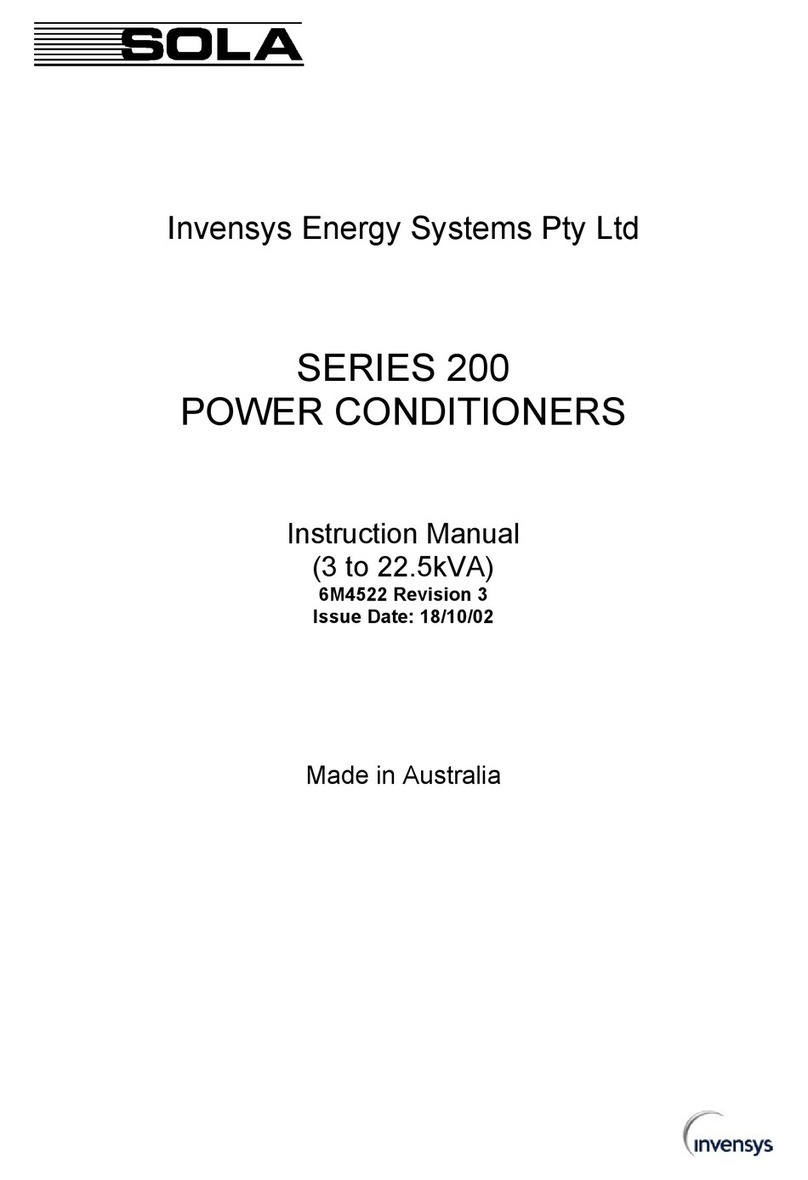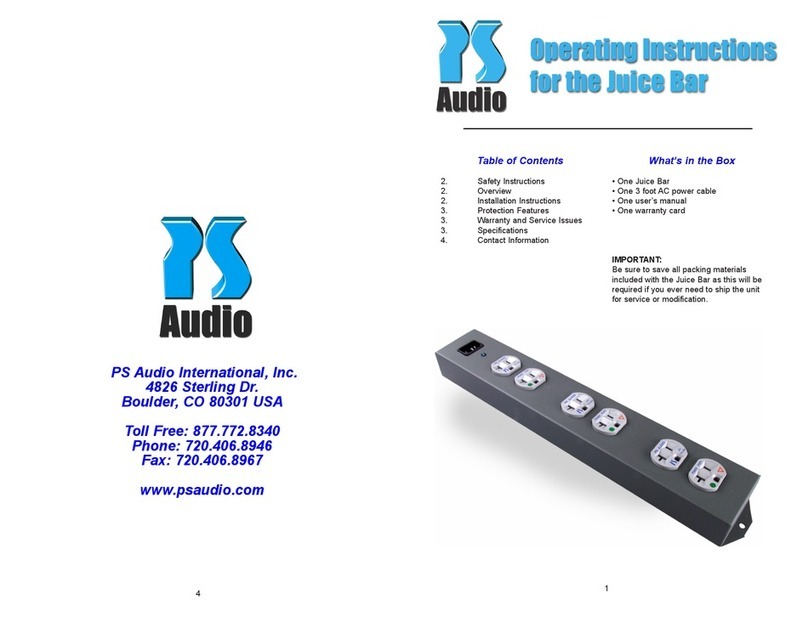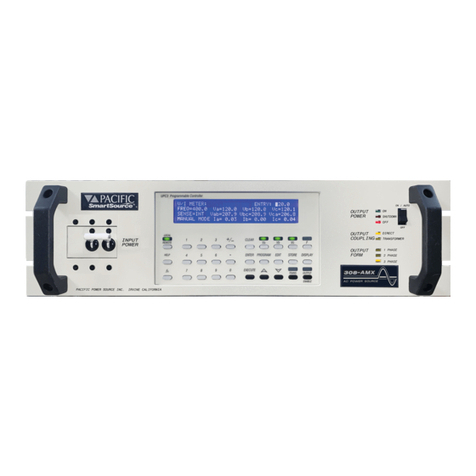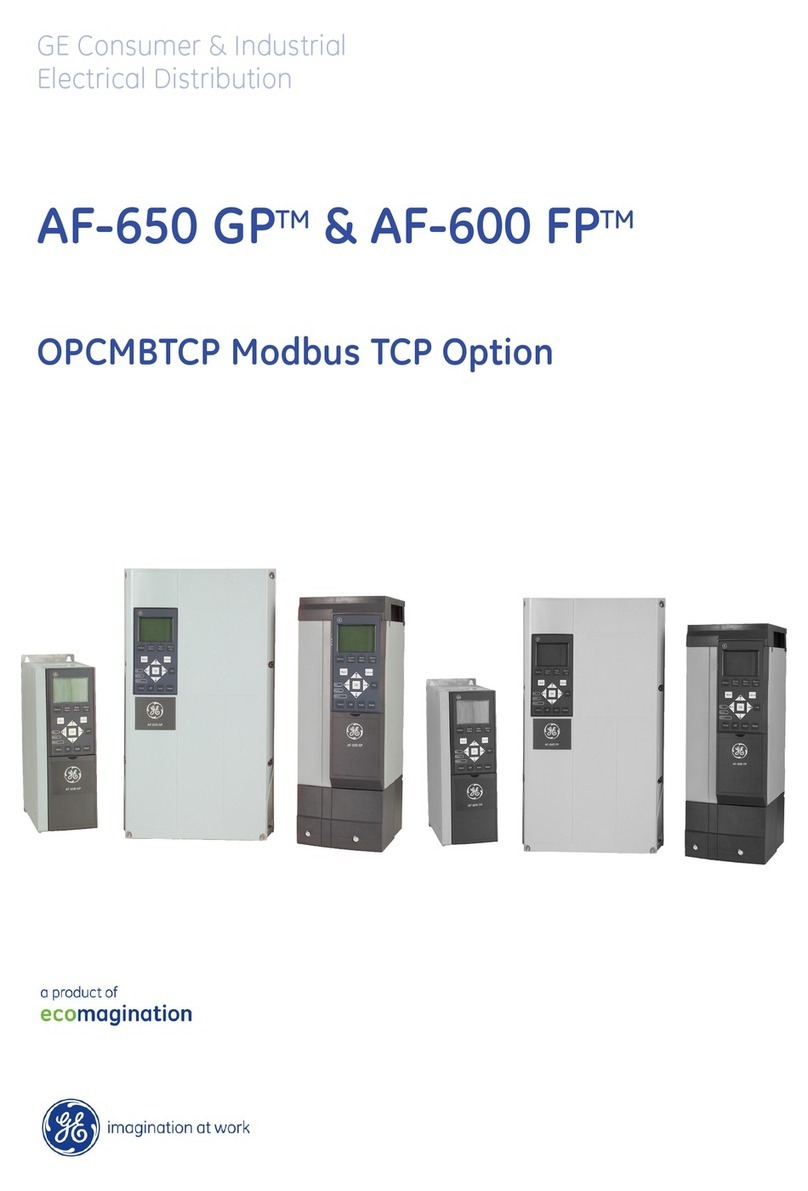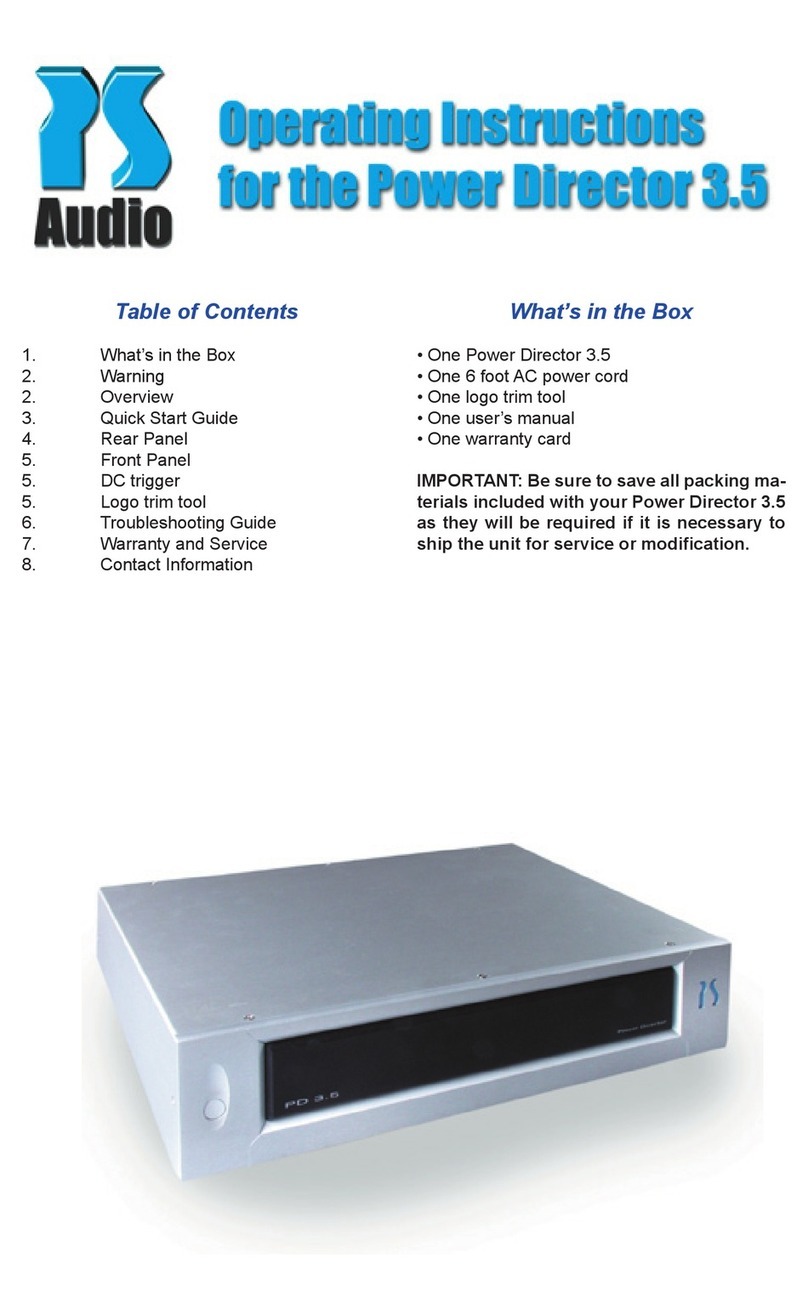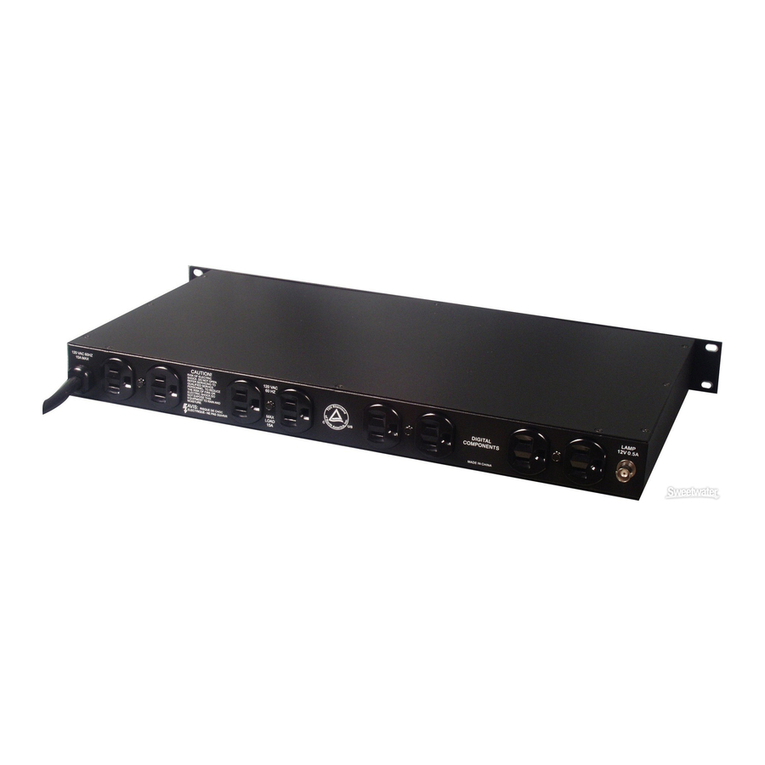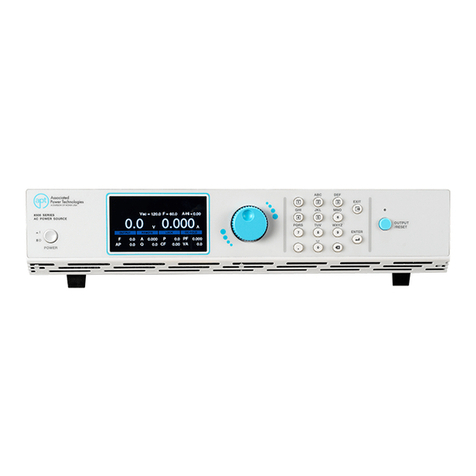ThinkRF P120 User manual

ThinkRF P120
Vehicular Power Conditioner
User Guide
Version 1.1
March 2019
Document no. 75-00 4-190 06
Copyright © 2019 ThinkRF Corporation, all rights reserved.
All product names are trademarks of their respective companies.
This document contains information that is proprietary to ThinkRF Corporation.

Important notice
The information in this
guide is furnished for
informational use only
and is subject to
change without notice
ThinkRF Corporation
assumes no
responsibility or liability
for any errors or
inaccuracies that may
appear in this document.
No part of this
publication may be
reproduced, published,
stored in an electronic
database, or transmitted,
in any form or by any
means, electronic,
mechanical, recording,
or otherwise, for any
purpose, without the
prior written permission
of ThinkRF Corporation.
Trademarks
ThinkRF, the ThinkRF
logo and P120 are
trademarks of ThinkRF
Corporation.
All other brand or
product names are
trademarks or registered
trademarks of their
respective companies or
owners.
ThinkRF Corp
90 March Road
Kanata, ON K2K 0G7
(61 ) 69-5104
HARDWARE WARRANTY AND LIMITATION OF LIABILITY
Read this warranty carefully before you use the product
ThinkRF P120 Vehicular Power Conditioner are warranted for workmanship and
materials for a period of one (1) year from the date of shipment as identified by the
Customer’s packing slip or carrier waybill. ThinkRF reserves the right to void the
warranty on any equipment that has been altered or damaged due to Customer
negligence, unauthorized repair, misuse of equipment, evidence of physical or
environmental damage, transportation abuse or removal of any ThinkRF
identification labels or serial numbers.
It will remain the responsibility of the Customer, having obtained a Return Material
Authorization (RMA) and shipping instructions from ThinkRF, to return, at the
Customer's expense, the defective unit to ThinkRF’s repair facilities. ThinkRF will
incur shipping charges for the return of warranty repaired equipment. The RMA
number can be secured by contacting ThinkRF Customer Service and Support
([email protected]). If the product does not fall within ThinkRF’s warranty period
or the product is found to be functioning as designed, then under the terms of
ThinkRF’s warranty policy, all costs of repairs and shipping will be charged directly
to the Customer. ThinkRF will warrant repaired units for a period of 90 days from
date of shipment from ThinkRF to the Customer. If the remaining period on the
original hardware warranty is greater than 0 days, then ThinkRF will honor this
remaining warranty period.
THINKRF EXPRESSLY DISCLAIMS ALL OTHER WARRANTIES AND
CONDITIONS, WHETHER EXPRESS OR IMPLIED, INCLUDING WITHOUT
LIMITATION, WARRANTIES, CONDITIONS OR REPRESENTATIONS OF
WORKMANSHIP, MERCHANTABILITY, FITNESS FOR A PARTICULAR
PURPOSE, DURABILITY, OR THAT THE OPERATION OF THE HARDWARE OR
LICENSED SOFTWARE WILL BE ERROR FREE. IN NO EVENT WILL THINKRF
BE LIABLE FOR INDIRECT, SPECIAL, INCIDENTAL, OR CONSEQUENTIAL
DAMAGES.
USE OF PRODUCTS IN HIGH RISK ACTIVITIES
THINKRF PRODUCTS ARE INTENDED FOR STANDARD INDOOR COMMERCIAL
USE. WITHOUT THE APPROPRIATE NETWORK DESIGN ENGINEERING, THEY
MUST NOT BE USED FOR ANY “HIGH RISK ACTIVITY”, as described in this
paragraph. Customer acknowledges and agrees that the products supplied
hereunder are not fault-tolerant and are not designed, manufactured or intended for
use or resale as on-line control equipment in hazardous environments requiring fail
safe performance including but not limited to the operation of nuclear facilities,
aircraft navigation or communication systems, air traffic control, direct life support
machines, or weapons systems, in which the failure of products could lead directly to
death, personal injury, or severe physical or environmental damage, all of which are
examples of “High Risk Activity”. THINKRF AND ITS SUPPLIERS EXPRESSLY
DISCLAIM ANY EXPRESS OR IMPLIED WARRANTY OF FITNESS FOR HIGH
RISK ACTIVITIES.

Table of Contents
Preface 4
Audience ............................................................................................................................... 4
Conventions .......................................................................................................................... 4
Obtaining the Latest Documentation ..................................................................................... 5
Document Feedback ............................................................................................................. 5
Obtaining Technical Assistance ............................................................................................ 5
Overview of P120 6
Setting Up the P120 6
Preventing Electrostatic Discharge Damage ......................................................................... 6
Unpacking the Box ................................................................................................................ 7
Getting Familiar with the P120 .............................................................................................. 7
P120 Vehicular Power Conditioner Unit .................................................................................... 8
Power Input Cables ................................................................................................................... 9
4’ Cigarette Lighter Plug to Female MX-LT Connector Cable ..................................................... 9
12’ Loose Leads, Stranded Solder to Female MX-LT Plug Cable .............................................. 9
Power Output Cables .............................................................................................................. 10
4’ Male MX-LT Connector to LEMO Plug Cable ....................................................................... 10
4’ Male MX-LT Connector to Barrel-Type Plug Cable ............................................................... 11
Connecting P120 and Cables .............................................................................................. 12
Operation Consideration and Maintenance ......................................................................... 1
Hardware Reference 14
P120 Specifications ............................................................................................................. 14
Connectors Reference ........................................................................................................ 14
LEMO Plug Connector .............................................................................................................. 14
Molex Connectors .................................................................................................................... 14
Document Revision History 15

Preface
Preface
This preface describes the audience for, the organization of, and conventions used in this
document. It also identifies related documentation and explains how to access electronic
documentation.
Audience
This document is written for technical people who have basic understanding, familiarity
and experience with test and measurement equipment.
Conventions
This section describes the conventions used in this document.
Grayed-out Font
Indicates a command or a feature is not yet available in the current release.
Courier Font
Illustrates this is an example for a command or a concept.
Light Blue Font
Contains hyperlink to the referenced source that can be clicked on.
Normal Bold Font
When used within a sentence or a paragraph, it emphasizes an idea to be paid attention
to particularly.
Red Font
Conveys special information of that section.
Note: This symbol means take note. Notes contain helpful suggestions or references to
additional information and material.
Caution: This symbol means be careful. In this situation, you might do something that
could result in equipment damage or loss of data.
ThinkRF P120 Vehicular Power Conditioner - User's Guide 1 1 4

Preface
Warning: This symbol means danger. You are in a situation that could cause bodily
injury. Before you work on any equipment, be aware of the hazards involved with
electrical circuitry and be familiar with the standard practices for preventing accidents.
Obtaining the Latest Documentation
Please visit our website's resource page at http://www.thinkrf.com/resources/ to obtain
the latest documentation.
Document Feedback
Please send your comments about this document or our other documentation to
Thank you, we appreciate your comments.
Obtaining Technical Assistance
For all customers who hold a valid end-user license, ThinkRF provides technical
assistance 9 AM to 5 PM Eastern Time, Monday to Friday. Please send your technical
support request through http://www.thinkrf.com/support/.
Before contacting Support, please have the following information available:
P120 serial number and product version, which are located on the product’s
identification label.
For any other information, contact ThinkRF at:
ThinkRF Corporation
90 March Road
Kanata, ON K2K 0G7
+1.61 . 69-5104
www.thinkrf.com
5 ThinkRF P120 Vehicular Power Conditioner - User's Guide v1 1

Overview of P120
Overview of P120
ThinkRF P120 is a small form factor Vehicular Power Conditioner (VPC) product,
designed to provide a regulated and stable +12VDC (±5%) 6W power source to
electrical equipments, including ThinkRF RTSA products, employed in a vehicular
environment. The VPC is design to protect the equipment from vehicular power
transients.
The P120 outputs a single regulated +12VDC under different input voltages ranging from
+8V to + 2V, but can easily be modified for different output voltages (contact ThinkRF for
alternatives). The inputs and outputs are provided via strain-relieved 16 AWG cables
with 2-pin ML-XT Molex connectors. The product has been tested to meet high and low
temperature requirements, shock, and vibration based on MIL-STD-PRF-28800.
Setting Up the P120
Ensure that you read and understand the following information about safety and
electrostatic discharge before you unpack and set up the P120.
Warning: Read the installation instructions before you connect the product to its power
source.
Preventing Electrostatic Discharge Damage
Electrostatic Discharge (ESD) is a single-event, rapid transfer of electrostatic charge
between two objects, such as an operator and a piece of electrical equipment. ESD can
occur when a high electrostatic field develops between two objects in close proximity.
ESD occurs when electronic components are improperly handled and is one of the major
causes of device failures in the semiconductor industry. Always follow the steps in this
document to prevent ESD.
Warning: Never open the P120 casing as personal injury may result and opening the
casing will void the warranty. There are no user-serviceable parts inside. Always contact
ThinkRF support for service through the online support form at
http://www thinkrf com/support/
Caution: Do not touch any exposed contact pins with bare hands, nor touching the two
exposed leads from a cable together when an active power source is running through the
ThinkRF P120 Vehicular Power Conditioner - User's Guide 1 1 6

Setting Up the P120
setup. If cables are connected at one end to an active power source only, do not touch
the exposed pins at the unconnected end of the cable.
Unpacking the Box
The following table lists the items that come with your P120 package. If any of the items
in the Purchase Order are missing or damaged, please contact your ThinkRF customer
service representative.
P120 Shipping Box Contents:
•P120 Vehicular Power Conditioner
Accessories, box items vary depending on your Purchase Order:
•4’ Car Cigarette Lighter Plug to Female ML-XT Plug Power In Cable
•12’ Loose Leads, Stranded Solder to Female ML-XT Plug Power In Cable
•4’ Male ML-XT to LEMO Plug Power Out Cable
•4’ Male ML-XT to Barrel-Type Plug Power Out Cable
Note: All the accessory cables are intended to be used with P120 only. Using the
cables in manner not intended for P120 or as described in this document will risk voiding
the warranty or any liability from ThinkRF.
Getting Familiar with the P120
This section provides information about the P120, the identification label, and the
associated P120 mating cables.
7 ThinkRF P120 Vehicular Power Conditioner - User's Guide v1 1

Setting Up the P120
P120 Vehicular Power Conditioner Unit
As shown in the images above, the P120 box consists of:
7” 16 AWG strain relief cables, one on each end of the P120 box;
a male ML-XT receptacle connector at the Power Input cable end;
a female ML-XT plug connector at the Power Output cable end;
a label on the P120 box that provides a clear indication of the input and output,
along with the serial number (S/N) needed for support service should that be
required.
The rugged ML-XT connectors, designed for critical vehicle wiring, provide a tightly
sealed connection to their mating counterparts.
Note: The ML-XT connectors have a wedgelock attached to secure the pins, and
particularly conceal the exposed the pins on the female plug. DO NOT remove these
wedgelocks.
ThinkRF P120 Vehicular Power Conditioner - User's Guide 1 1 8

Setting Up the P120
Power Input Cables
On the power input end of the P120, there are two cable options as mentioned below.
Follow Connecting P120 and Cables section for the proper instructions on putting
together the cables.
4’ Cigarette Lighter Plug to Female MX-LT Connector Cable
The 4’ 16 AWG cigarette lighter plug to female ML-XT Plug cable allows users to
conveniently make use of a car cigarette lighter receptacle (also known as 12V socket
port) to provide the required voltage to the P120.
Warning: DO NOT connect this 12V source from the car directly to the 12V port of any
electrical equipment (such as RTSAs) in any way without using the P120. The voltage
output from the 12V socket will fluctuate, potentially causing damage to the equipment.
12’ Loose Leads, Stranded Solder to Female MX-LT Plug Cable
As shown in the following picture, this Power Input cable consists of Red and Black loose
leads, stranded solder attached to a 12’ 14 AWG cable, which is then terminated with a
Female Molex ML-XT Plug. This cable allows user to attach to any power source that
meets the output power range specified in P120 Datasheet. Some examples of such
source are a car battery or a programmable DC power supply.
9 ThinkRF P120 Vehicular Power Conditioner - User's Guide v1 1

Setting Up the P120
Power Output Cables
Similarly, on the Power Output end, the following cables are available. They can be used
to connect to a ThinkRF R5700, RTSAs or your equipment.
4’ Male MX-LT Connector to L MO Plug Cable
The 4’ male MX-LT connector to LEMO 2B plug 14 AWG cable connects the Power
Output of the P120 unit to electrical equipment, such as ThinkRF R5700, that has a
LEMO receptacle as its Power Input port. The push-pull self-latching LEMO plug of type
2B provides a secure connection to its mating connector against vibration, shock or pull
on the cable. Along with the rugged MX-LT, such cable setup is necessary in a mobile
setting.
ThinkRF P120 Vehicular Power Conditioner - User's Guide 1 1 10

Setting Up the P120
4’ Male MX-LT Connector to Barrel-Type Plug Cable
The 4’ male MX-LT connector to Barrel-type plug 14 AWG cable connects the Power
Output of the P120 unit to electrical equipment with Barrel-type receptacle Power Input
port, such as ThinkRF RTSA products.
11 ThinkRF P120 Vehicular Power Conditioner - User's Guide v1 1

Setting Up the P120
Connecting P120 and Cables
Follow the steps in this section to connect the P120 and the cables. The diagram bellow
illustrates the setup steps, starting from right to left. The circled numbers shown in the
diagram refer to the particular steps of the setup instruction.
As mentioned before, there is a choice of Power Input cables terminated with either a
vehicle cigarette lighter plug or two loose leads stranded solder. The Power Output cable
choices depend on the equipment’s power port type, LEMO or Barrel type. Use the
appropriate cables for your setup.
1. Before connecting the P120 output to an equipment or RTSA, verify the power
source to be applied to the P120 is indeed within +8V to +32V DC range. If
possible, do not turn on the power source nor the equipment until the complete
connection is established.
Caution: Do not supply an input voltage level exceeding + 2VDC or an input current
level exceeding 8.0A to the P120. Exceeding either of these limits can cause serious
damage to the device.
2. Connect the Power Output cable with either LEMO or Barrel-type plug to the
mating connector on the equipment side. For examples:
◦to connect to the ThinkRF R5700, attached the Power Output cable with the
LEMO plug to its receptacle on the R5700;
◦similarly, connect the Barrel-type plug cable to 12V power port on the R5500.
3. Attach the male MX-TL connector of the Power Output cable to the female
MX-TL connector on the P120’s Output end.
4. Connect the male MX-TL connector on the P120’s Input end to the female MX-TL
connector of the Power Input cable. Then follow either Step 5 or Step 6,
depending on the Power Input cable used.
5. If the Power Input cable with cigarette lighter plug is used, plug the lighter
connector into the vehicle cigarette lighter port.
ThinkRF P120 Vehicular Power Conditioner - User's Guide 1 1 12

Setting Up the P120
6. If the loose leads stranded Power Input cable is used, first connect the black
lead of the cable to the ground terminal of the power source. Then, connect the
red lead of the cable to the positive terminal of the power source.
Caution: This connection order is important to prevent accidental damage to
equipments and injury when touching of the two leads together to the positive power
source.
7. Now the power source and then the equipment could be turned on.
To disconnect, first power off the equipment and then the power source (if possible).
Caution: If the Power Input cable with loose leads is used, first remove the red lead,
follow by the black lead. Again, this disconnection order is important.
The next figure is an example setup of the P120 with loose lead stranded at the input end
and LEMO connector at the output.
Operation Consideration and Maintenance
The P120 should be operated only within its specified operating temperature range of 14
to 1 1°F (-10 to 55°C). The unit should be store within its specified non-operating
temperature range of -40 to 160°F (-40 to 71°C).
Caution: Do not expose the device to water in any condition or operate in prolong high
humidity environment, as doing so might result in personal injury due to electrical shock
as well as damage to the device.
13 ThinkRF P120 Vehicular Power Conditioner - User's Guide v1 1

Setting Up the P120
Some regular maintenance is needed to maintain the unit in its good working state. This
includes cleaning the connector contacts from time to time in a safe manner to eliminate
any dust or debris collected. When performing such maintenance duty, do not have any
cables or P120 connected to a power source.
Hardware Reference
This section provides physical and electrical specifications, and connectors reference for
the P120.
P120 Specifications
The following table outlines the physical and electrical specifications for the P120 unit
only, with no other cables attached.
Description Design Specification
Dimensions (W x L x H) 5.16 x 2.44 x 1. 4 in. (1 .1 x 6.2 x .4 cm)
Weight (approximately) ~ 40g or 12 oz
Input port Molex Male 2-pin MX-LT
Output port Molex Female 2-pin MX-LT
Input supply voltage +8 to + 2 VDC
Input supply current 8.0 A maximum
Output supply voltage 12 VDC ±5%
Output power 6 Watts
Operating temperature 14 to 1 1°F (-10 to 55°C)
Storage temperature -40 to 160°F (-40 to 71°C)
Connectors Reference
This section provides source links to the P120 related connectors for references.
L MO Plug Connector
For more information on the LEMO plug of type 2B, see LEMO’s site:
https://www.lemo.com/en/products/low-voltage-connector/b-connector
Molex Connectors
For more information on the Molex 2-pin ML-XT sealed connectors, see Molex’s site:
https://www.molex.com/molex/products/family?key=mlxt_sealed_connection_system
ThinkRF P120 Vehicular Power Conditioner - User's Guide 1 1 14

Document Revision History
Document Revision History
This section summarizes document revision history.
Document
Version
Release
Date
Revisions and Notes
v1.0 May 15, 2018 First release
V1.1 Mar 6, 2019 Typo Correction
15 ThinkRF P120 Vehicular Power Conditioner - User's Guide v1 1
Table of contents
